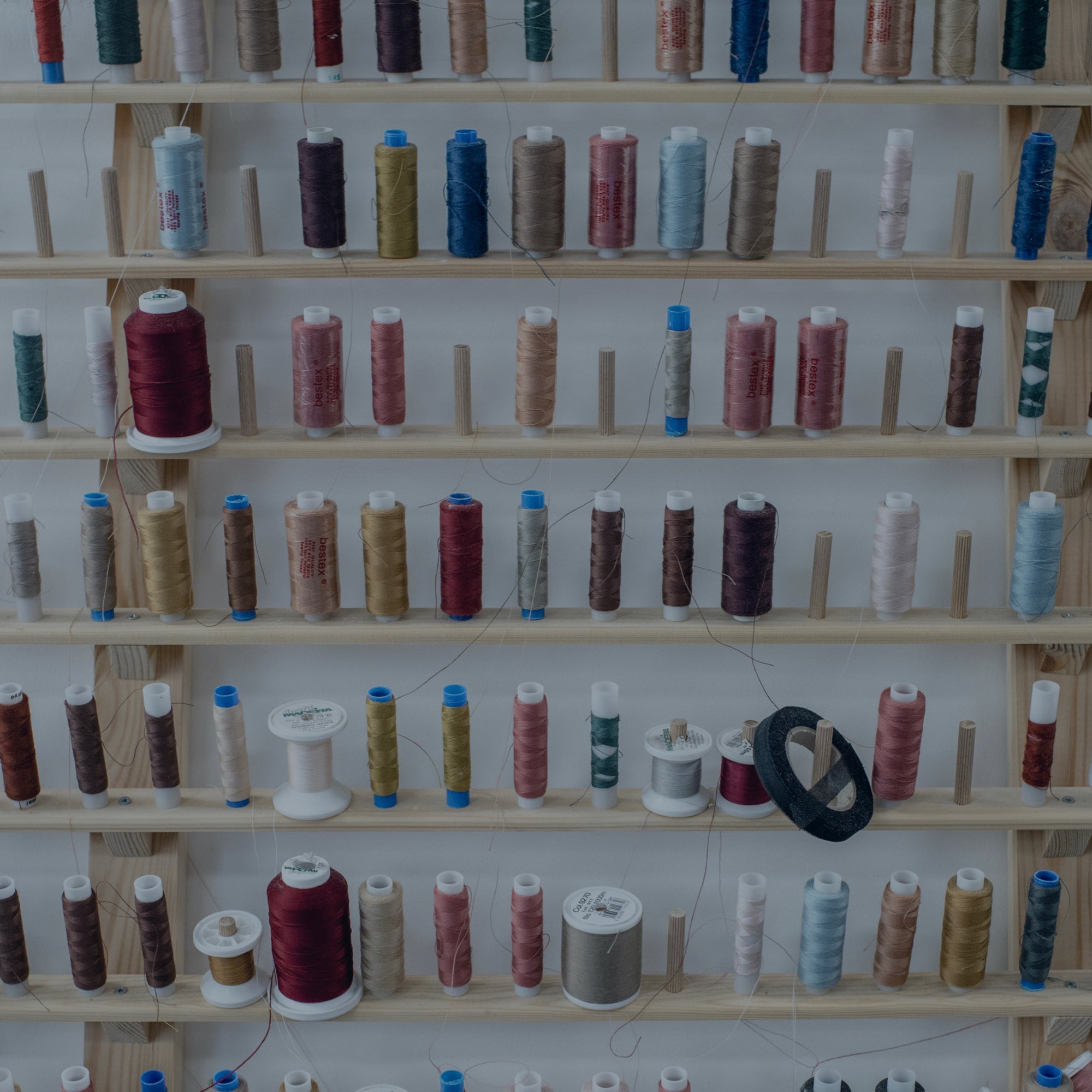Evolution of Technology in the Garment Industry

Technological Advancements in the Garment Industry.
In the garment industry today, we are at an all-time high where technological advancements have reached new limits allowing for faster production, usage of new materials, safety standards, and even “anti-counterfeiting” technology. This technology will allow industry leaders to eliminate the replication of their valuable products, which are often sold illegally on the streets.
What is so special about this technology you say?
Instead of having a logo for distinction, brands will have their specific DNA codes that will make their brands completely unique. Especially for the high fashion clothing/accessory brands, this advancement has great importance, specifically concerning the pressing issue of illegal replication. When we discuss garment DNAs, we can say that technology is also evolving in the garment industry but at what scale? what is the level of engagement? and how was the whole process of engagement and how will it be?
The garment industry is a gigantic industry, taking a spot in the top 3 largest industries globally. Just in 2018, there were more than 150 billion garments produced, roughly representing 20 articles of clothing per person. This whole production generates US$1.7 Trillion in volume which is the equivalent of Canada’s economy, which is the 10th largest in the world.
But how did garment manufacturing advance so much from the days in Imperial Russia or France where one decent garment was everything for a person, to today that you can have a garment DNA or using online platforms to find their manufacturer located at the other side of the world? The answer is apparently the evolution of technology.
Anthropologists state that our ancestors used clothing to protect themselves from the weather conditions using animal skins and vegetations. The evidences show us that human beings started wearing clothing in societies more than 170.000 years ago, and the first primitive needle was seen around 50.000 years ago. Even dyed fabrics were introduced some 36.000 years ago.
So we can say that people were knitting and producing fabrics for a long time but the concept of ready-to-wear which was basically more form-fitting then before started to exist in the 14th Century. But of course during those days clothing was all about hand-made production and because of the limitations to technique and technology, the scales were small compared to today. After some time, garment manufacturing increased dramatically with the spark of the Industrial Revolution. This resulted in new scales of production as technology dramatically advanced capacity
In 1738, the Roller Spinning machine which was spinning cotton into thread was invented and by 1764, multi roller spinning machines were started to be used. But still, in the early time of the 19th Century, most of the garment/textile manufacturers that are working on a big scale were based on hand sewing for piece work. Of course, at this point, the invention of steam-powered machines changed the entire supply chain.
The greatest beneficiaries of the industrial revolution were England and France. Tailors and weavers became weary of these new advancement because they could see machinery as a benefit but also as a threat to them. Production with machinery had some various balances. There was a huge capital requirement for building a plant with machines inside. Workers lost their individuality, independence, and skill-based valuing. With the negative and positive sides, the new system was built and garment/textile manufacturing kept more and more mature about the efficiency and technological level. Of course, these were changing with respect to different geographical locations. That difference still exists today but the same advanced technology is more spread throughout the world than ever.
We shouldn’t forget that the only difference is not the efficiency improvements. In today’s world, there are lots of innovations and those innovations are not always incremental but sometimes radical. The companies are focused on R&D more then ever and they are trying to catch the distinctive innovation between their competitors. Also with the help of globalization, the scales rose up and one of the main aspects is to be distinctive and innovative.
Over the last few decades, the textile\garment industry changed a lot. Although the structure of conventional machines and their processes are still used, they actually evolved into more technologically-advanced versions of their predecessors. Even for the cases that structure of the processes stay the same, it got computerized and got programmable. The work that was done by a human being can now be done by computerized programmable machines. It is a fact that this had a negative impact on labor employment in the garment\textile industry, it allowed to decrease the costs due to the automation. And this ended up with the growth in the garment\textile market. This technological engagement changed the dynamics of the market radically and of course, allowed today’s numbers to reach these levels as the volume and profitability of the production.
Automation has also evolved through time, of course. This journey started from some basic automation to the edge of the beginning of Industry 4.0 today. This new revolution of manufacturing is based on some main pillars like data at the heart of the whole system, connectivity, and cyber systems. We can say that the garment industry is following the other industries like electronics or automotive, from way behind but still, there are lots of facilities that try to engage with the latest technological updates inside the manufacturing system. Today, data is so important for most of the high-end garment manufacturing.
Some manufacturers with highly automated processes: Country Bright Company Limited, Long River Computer Label Development Co. Ltd.
When your operations have a big scale, big data is an inevitable element for managing basically everything and these data need to be collected via the internet of things, sensors or operators, and uploaded and shared via the cloud. Cloud is started to be used for virtual sharing data and services whenever you need it. But it changed the way big data collection and usage. Cloud is the main element for providing connectivity which is one of the pillars of Industry 4.0.
Although the existence of IoT (Internet of Things) just started to increase in our daily lives, it was already around in manufacturing and maintenance. IoT is used for both electronic devices and processes to engage with the cloud, data and continuous improvement of all operations.
Today, especially on the data side, advanced data analytics allowed companies to model their machines, processes and risks better to build predictive technologies. The especially growing ability to model the organizations, the companies became more resilient to unexpected situations and more flexible because of their resilient operations. Flexibility is a very important phenomenon in the manufacturing industry which is really hard to build. Some manufacturers are using their flexibility for agility, others can use it for decreasing their Minimum Order Quantity (MOQ) numbers to lower levels. But at the end of the day, flexibility is an important achievement for manufacturers and this is also provided by the improvement of technology.
Here you can find some manufacturers that have a low level of MOQs: Interfashion ProDesign SRL, Fairy Descent Limited, GS 7 Co, Nicobar Isle Incorporated, Veronika Persché, MillGrand
Inside Lean Manufacturing, the concept of Jidoka is an important phenomenon. It can be described as “Intelligent automation” or “Automation with a human touch”. This is an essential concept especially for the garment\textile manufacturing market, to build the balance between humans and automation inside the process. Especially on that point, Artificial Intelligence and Machine Learning will have an effect on eliminating the share of human needs during production. These concepts also provide to increase the efficiency, ease the resource management, decrease the cost and improve the quality.
Simulations are also tremendously important for productivity and efficiency. This concept is also leveraged by data and the aim is mirroring the real world. Simulations effected on the garment manufacturing a lot, especially for the material selection, being proactive for the risks and process improvement sides.
Nanotechnology is also one of the major technologies in the garment industry. Nanotechnology is not only enabling faster computer processing, super-precision manufacturing but also has a huge effect on the material side and with the improvements of both sides, provides longer product lifecycles. This topic is also really important for sustainable production and green products inside the garment industry.
Here you can find some green and sustainable manufacturers: Baxter, Hyak Design Group
We can say that blockchain technology also had a huge impact on the garment industry. It provided transparency on the supply chain side and eliminated information asymmetry which has huge importance. But we can say that blockchain engagement is just beginning and in the future year by year, this feature will be used more and more. We can say the same thing for 3D printing technology. It has some applications inside the garment market but it is not still used by a wide variety of companies. The main reason is the high-cost levels of course. After the decrease in the costs and engagement with the industry, it will be a technology that will change the whole dynamics of the industry for sure.
There are many more technologies that we can mention, lots of improvements and changes. We can say that the garment industry is evolving regarding lots of aspects including size. With the help of technology, the garment industry will be more productive, more efficient and way much bigger than today. The future is breathtaking and the garment industry will be the part of it!










